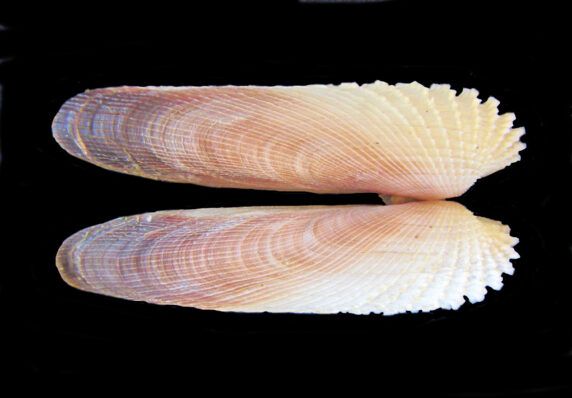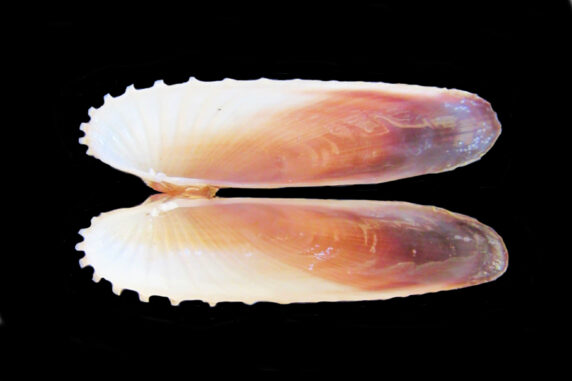Pacific Coast Angel Wing Shell, Pholas chiloensis

 Pacific Coast Angel Wing Shell, Pholas chiloensis. Shell collected within Magdalena Bay, Baja California Sur, October 2019. Size: 5.7 cm (2.2 inches) x 1.5 cm (0.6 inches). Identification courtesy of Bob Hillis, Ivins, Utah.
Pacific Coast Angel Wing Shell, Pholas chiloensis. Shell collected within Magdalena Bay, Baja California Sur, October 2019. Size: 5.7 cm (2.2 inches) x 1.5 cm (0.6 inches). Identification courtesy of Bob Hillis, Ivins, Utah.
The Pacific Coast Angel Wing, Pholas chiloensis (Molina, 1782), is a bivalve mollusk that is a member of the Pholadidae Family of Angel Wings. The exterior and interior of the shell white often stained with brown. They are equivalve with an elongated oval profile and a somewhat cylindrical shape and both ends are sharply rounded. The anterior third of the shell has imbricated radial sculpting. The remainder of the shell has concentric sculpting. Their hinge does not have teeth and they have three adductor muscle scars. Their siphons are long and united and their foot is circular, truncated and forms a sucker. They are filter feeders. The shell is thin and fragile. The exterior and interior of the shell white often stained with brown. The Pacific Coast Angel Wing reach a maximum of 13.1 cm (5.2 inches) in length and 3.4 cm (1.4 inches) in height.
The Pacific Coast Angel Wing are found within burrows in clay, mud, soft rock and wood in the intertidal zone to depths up to 150 m (492 feet). They are found in all Mexican waters of the Pacific with the exception that they are absent from north of Scammon’s Lagoon (Laguna Ojo de Liebre), along the central and northwest coasts of Baja California.
Synonyms include Pholas dilecta, Pholas laqueata, and Pholas rotifer.